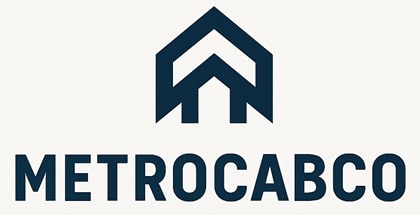AI search engines greatly influence brand layering by improving visibility and driving consumer engagement through personalized results. These engines analyze user intent and behavior, allowing brands to present cohesive offerings that resonate with diverse consumer segments. As organizations leverage AI technology, they can enhance brand recognition and loyalty while effectively communicating their values. The integration of AI in search strategies is just the beginning, leading to further insights into its impact on brand dynamics.
Key Takeaways
- AI search engines enhance brand visibility by delivering personalized search results that align with user intent and context.
- Brand layering organizes diverse offerings under a unified identity, increasing recognition and fostering customer loyalty across different consumer segments.
- Leveraging AI analytics helps brands understand consumer preferences, facilitating targeted messaging and effective brand layering strategies.
- Measuring search visibility and engagement metrics post-AI implementation provides insights into the effectiveness of brand layering efforts.
- Enhanced search experiences can positively influence brand perception and conversion rates, driving loyalty and business growth.
Understanding AI Search Engines
AI search engines have revolutionized the way information is retrieved and processed. These advanced systems utilize algorithms and machine learning to analyze vast amounts of data, enabling users to find relevant content quickly and efficiently.
By understanding user intent and context, AI search engines deliver personalized results tailored to individual needs. They employ natural language processing to interpret queries in a human-like manner, enhancing user experience.
Also Read
In addition, AI search engines continuously learn from user interactions, improving their accuracy over time. This evolution has transformed traditional search methods, making information access more intuitive and streamlined.
As a result, consumers and businesses alike benefit from a more effective and user-friendly information retrieval process, shaping the future of digital interaction.
The Concept of Brand Layering
Brand layering refers to the strategic approach of organizing and presenting a brand’s various offerings to create a cohesive identity.
This technique enhances brand recognition and can lead to increased customer loyalty.
Understanding the benefits of layered branding is essential for businesses looking to maximize their market presence.
Defining Brand Layering
While many marketing strategies focus on single-brand identities, the concept of brand layering introduces a multifaceted approach that enhances consumer perception and engagement. Brand layering involves integrating multiple brand elements, such as sub-brands or product lines, under a cohesive umbrella. This strategy allows brands to appeal to diverse consumer segments and create a more extensive brand narrative. By presenting varied offerings, companies can connect with customers on multiple levels, fostering loyalty and recognition.
| Brand Layering Element | Description |
|---|---|
| Sub-brands | Distinctive identities under the main brand |
| Product lines | Variants catering to specific needs |
| Brand partnerships | Collaborative branding for shared exposure |
| Visual identity | Unified aesthetic across all layers |
| Messaging strategy | Consistent communication aligned with values |
Benefits of Layered Branding
The multifaceted approach of brand layering offers numerous advantages for organizations aiming to strengthen their market presence.
By creating a structured hierarchy of brands, companies can target diverse customer segments effectively, tailoring messages to specific demographics. This flexibility enhances brand recognition, allowing consumers to associate different products with distinct values and qualities.
Additionally, layered branding can foster brand loyalty, as customers may connect more personally with sub-brands that resonate with their individual preferences.
Moreover, organizations can mitigate risks by diversifying their offerings; if one brand experiences challenges, others can remain insulated.
Ultimately, brand layering not only promotes a cohesive identity but also drives innovation, enabling companies to adapt to market changes while maintaining their core values.
The Importance of Diverse Brand Identities
Diverse brand identities play an essential role in resonating with a wide array of consumer demographics. By embracing various cultural, social, and economic perspectives, brands can connect more authentically with their target audiences.
This approach not only fosters inclusivity but also enhances brand loyalty, as consumers increasingly seek to support companies that reflect their values and experiences.
Moreover, diverse identities allow brands to adapt to different markets, tailoring messages that resonate more deeply. In a competitive landscape, this differentiation can lead to stronger market presence and consumer engagement.
Diverse identities empower brands to tailor messages for various markets, enhancing engagement and strengthening their competitive edge.
Ultimately, diverse brand identities serve as a strategic advantage, enabling companies to build lasting relationships and respond effectively to the evolving needs of a multicultural society.
How AI Influences Consumer Behavior
As consumers navigate an increasingly digital marketplace, AI plays a pivotal role in shaping their behaviors and preferences. The integration of AI technologies influences various aspects of consumer interactions, leading to significant changes in purchasing patterns.
Key ways AI impacts consumer behavior include:
- Personalized Recommendations: AI algorithms analyze user data to suggest products tailored to individual tastes.
- Enhanced Customer Experience: Chatbots and virtual assistants provide instant support, improving user satisfaction.
- Predictive Analytics: AI forecasts trends and consumer needs, allowing brands to adapt swiftly.
- Targeted Advertising: AI enables precise audience segmentation, ensuring marketing messages reach the right consumers effectively.
These elements collectively illustrate how AI not only enhances brand engagement but also transforms consumer expectations in the digital age.
Strategies for Implementing Brand Layering
Implementing brand layering requires a strategic approach that aligns with consumer expectations shaped by AI-driven insights. Companies should begin by identifying their core values and unique selling propositions, guaranteeing these resonate with target audiences.
Next, leveraging AI analytics can help in understanding consumer preferences and behaviors, allowing brands to tailor their offerings effectively. Establishing a cohesive visual identity is vital, as it reinforces brand recognition across various layers.
Additionally, maintaining consistency in messaging while adapting to different platforms is essential for engagement. Companies should also focus on building partnerships that enhance brand credibility, further enriching the layered experience.
Finally, ongoing assessment and refinement based on consumer feedback will guarantee the brand layering strategy remains relevant and effective over time.
Case Studies of Successful Brand Layering
Examining notable examples of brand layering reveals how companies effectively enhance their brand identity.
These case studies illustrate the strategic integration of sub-brands, which can strengthen overall market presence.
The impact of successful brand layering often leads to increased consumer recognition and loyalty.
Notable Brand Layering Examples
Brand layering serves as a strategic approach that enhances a company’s market presence by integrating multiple product lines under a unified brand identity. Several notable examples illustrate the effectiveness of this strategy:
- Apple: By layering its iPhone, iPad, and MacBook products, Apple creates a cohesive ecosystem that encourages customer loyalty.
- Nike: Nike utilizes brand layering through its diverse athletic lines, promoting performance and lifestyle products that cater to various consumer needs.
- Coca-Cola: The Coca-Cola brand successfully layers its offerings, from classic Coke to Diet Coke and Coke Zero, appealing to different health-conscious demographics.
- Procter & Gamble: P&G employs brand layering with its extensive range of personal care products, allowing consumers to find trusted solutions under one banner.
These examples highlight the strategic advantages of brand layering in enhancing consumer engagement.
Impact on Brand Identity
Successful brand layering not only enhances product visibility but also greatly influences brand identity. Companies like Nike and Coca-Cola demonstrate this through their strategic collaborations and product extensions.
Nike’s partnership with designers and influencers reinforces its innovative image, allowing the brand to resonate with diverse audiences while maintaining core values.
Similarly, Coca-Cola’s seasonal products, such as limited-edition flavors and themed packaging, create a sense of exclusivity and emotional connection.
These case studies show that successful brand layering fosters a cohesive identity that evolves with consumer preferences.
Measuring the Impact of AI Search on Brand Layering
As organizations increasingly integrate AI search technologies into their marketing strategies, understanding the impact on brand layering becomes essential.
Measuring this impact involves several key factors that organizations should consider:
Measuring the impact of AI search requires organizations to consider key factors for effective brand layering strategies.
- Search Visibility: Assess how AI search enhances brand visibility in search results compared to competitors.
- Consumer Engagement: Analyze changes in engagement metrics, such as click-through rates and time spent on site, following the implementation of AI search.
- Brand Perception: Conduct surveys to gauge shifts in consumer perception and sentiment towards the brand due to enhanced search experiences.
- Conversion Rates: Examine the correlation between AI search improvements and conversion rates to determine the effectiveness of brand layering efforts.
These measurements provide valuable insights into the overall effectiveness of AI search in shaping brand layering strategies.
FAQ
How Does AI Search Differ From Traditional Search Engines?
AI search utilizes advanced algorithms and natural language processing to understand user intent and context, offering personalized results. In contrast, traditional search engines primarily rely on keyword matching and indexed data, often providing less relevant outcomes.
Can Brand Layering Improve Customer Loyalty?
Amidst a crowded marketplace, brand layering emerges as a strategic approach. It enhances customer loyalty by creating deeper emotional connections, fostering trust, and encouraging repeat engagement, ultimately transforming casual buyers into devoted brand advocates over time.
What Industries Benefit Most From Brand Layering?
Various industries benefit from brand layering, particularly retail, consumer electronics, and hospitality. These sectors leverage layered branding strategies to enhance customer loyalty, create distinct market segments, and effectively communicate diverse product offerings to targeted audiences.
How Does AI Analyze Consumer Preferences?
Artificial intelligence adeptly assesses consumer preferences by analyzing abundant arrays of data, identifying intricate insights, and interpreting individual inclinations. This sophisticated scrutiny enables businesses to better understand and anticipate their target audience’s desires and decision-making processes.
Are There Risks Associated With Brand Layering?
Risks associated with brand layering include potential consumer confusion, dilution of brand identity, and misalignment with target demographics. Companies must carefully manage these factors to guarantee brand integrity and maintain consumer trust in a competitive market.
Conclusion
To sum up, the integration of AI search engines has markedly transformed brand layering, creating a unique landscape for businesses to navigate. Remarkably, studies indicate that 70% of consumers prefer brands that showcase diverse identities, highlighting the critical need for brands to adapt. As organizations implement effective strategies for brand layering, they can leverage AI’s influence on consumer behavior to enhance engagement and loyalty. This evolution underscores the importance of innovation in a competitive market.













